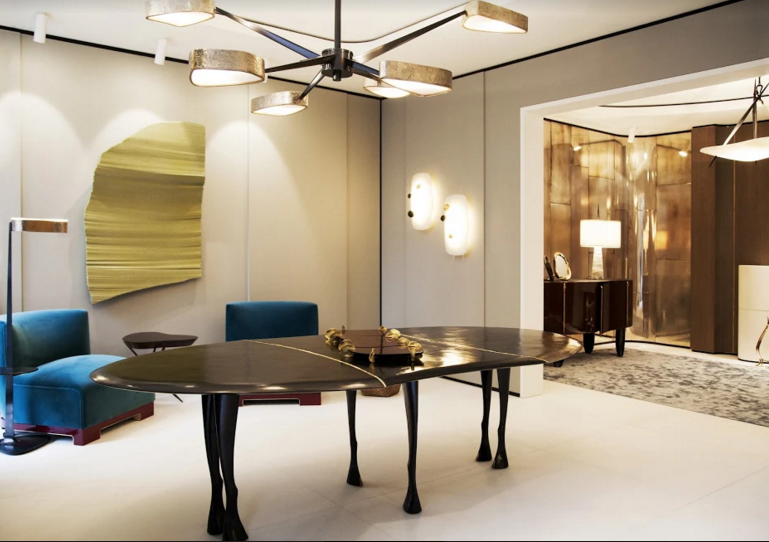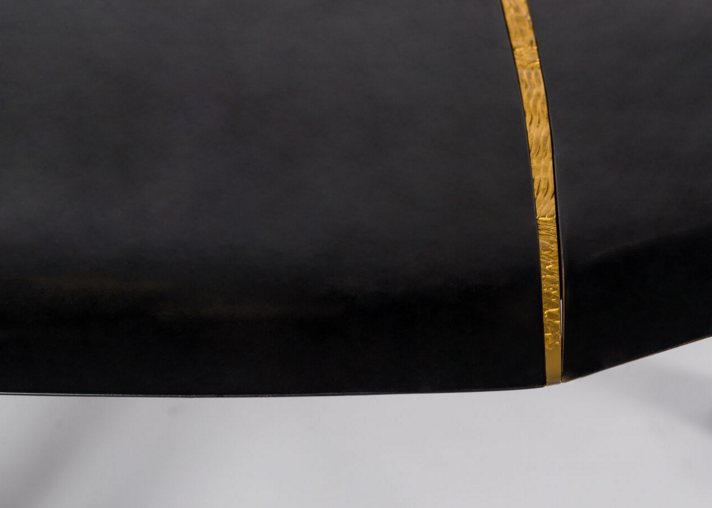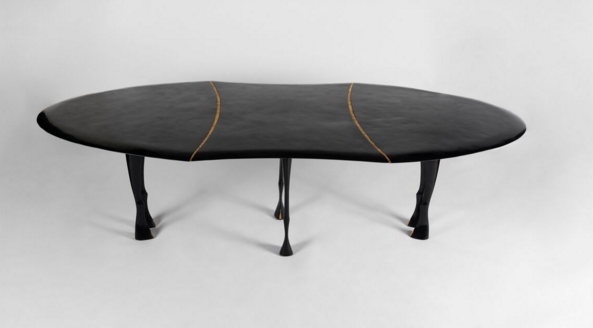Rome-based architect Achille Salvagni named his new table after his namesake: Achilles, in Greek mythology the hero of the Trojan War, who was also called Pelide. The Pelide Table was crafted with inspiration from the Shield of Achilles, used by the hero in battle in Homer’s “Iliad” (and, as Salvagni points out, on view in the Brad Pitt film Troy).

Of all Salvagni’s works—70 or so are currently on view in the East Village gallery Maison Gerard, among them polished royal oak boxes adorned with gilt horns and handwoven silk; and hefty concave sconces crafted of patinated cast bronze and onyx that somehow seem to levitate, belying their weight—the Pelide Table is the most time- and labor-intensive.
The pieces at the gallery are not part of a traveling exhibition; they are incorporated alongside the work of other artists, and will remain at the space when the show finishes at the end of the month.

“It took around four and a half months to create Pelide,” says Salvagni. “First, the table was sketched. Next, I turned the sketches into a small model and then I produced a 1:1 model using wood and clay, which was then used to create the molds. Working with my bronze foundry, we then cast the table in bronze and assembled it around a hidden frame. Finally, we applied the black and gold patina to the bronze and made sure that there was an even patina across the surface of the table—something quite difficult to do across such a large area.”

There are only a few Pelide Tables in the world. Salvagni has sold the prototype as well as the first edition; there are only two remaining editions.

“The name Pelide is an epithet for Achilles. Inspired by my name, I wanted to create an homage to the great mythological warrior, Achilles, son of Peleus, King of the Myrmidons, and Thetis, the immortal goddess of the sea,” says Salvagni of his ancient inspiration. “The tabletop is shaped like a shield in reference to Achilles’ position as the greatest warrior and his famous shield, which was a gift from Hephaestus, son of Zeus and Greek god of metalworking and craft.”
Even the table’s legs—both their inspiration and their number—allude back to the myth. “The legs of the table represent Achilles’ teacher, the centaur Chiron,” says Selvagni. “Thus, the legs of Chiron supporting Achilles symbolize the strong connection between the student and his teacher, where one is supported by the other. The table has six legs in total—the sum of Achilles’ and the centaur’s legs.”




























